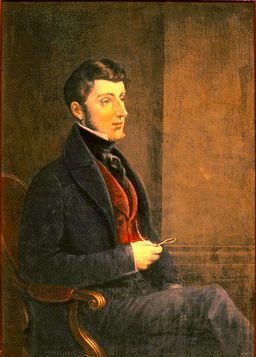Browse "Atlantic Canada"
-
Article
Allan Gilmour
Allan Gilmour, shipbuilder, timber merchant (b at Craigton, Mearns [Strathclyde], Scot 29 Sept 1805; d at Glasgow, Scot 18 Nov 1884).
"https://development.thecanadianencyclopedia.ca/images/tce_placeholder.jpg?v=e9dca980c9bdb3aa11e832e7ea94f5d9" // resources/views/front/categories/view.blade.php
https://development.thecanadianencyclopedia.ca/images/tce_placeholder.jpg?v=e9dca980c9bdb3aa11e832e7ea94f5d9
-
Article
Angus McAskill
Angus McAskill, the Cape Breton giant (b at Harris, Scot 1825; d at Englishtown, NS 8 Aug 1863). The tallest nonpathological giant on record, at maturity he was 236 cm (7´9´) tall, weighed 193 kg (425 lbs) and had a shoulder width of 112 cm and palms measuring 20 cm by 30 cm.
"https://development.thecanadianencyclopedia.ca/images/tce_placeholder.jpg?v=e9dca980c9bdb3aa11e832e7ea94f5d9" // resources/views/front/categories/view.blade.php
https://development.thecanadianencyclopedia.ca/images/tce_placeholder.jpg?v=e9dca980c9bdb3aa11e832e7ea94f5d9
-
Article
Bartholomew Roberts (Black Bart)
Bartholomew Roberts, pirate (born circa 1682 in Pembrokeshire, Wales; died 10 February 1722 in Guinea, West Africa). Nicknamed “Black Bart,” Bartholomew Roberts became a pirate, captaining more than 400 ships off the coasts of Africa, North America and South America, including the Caribbean and Newfoundland and Labrador. Only three years after becoming a pirate, he was killed by a cannon blast in a battle with a British ship off the coast of Guinea.
"https://d2ttikhf7xbzbs.cloudfront.net/BlackBartBartholomewRoberts/Bartholomew_Roberts.jpg" // resources/views/front/categories/view.blade.php
https://d2ttikhf7xbzbs.cloudfront.net/BlackBartBartholomewRoberts/Bartholomew_Roberts.jpg
-
Article
Basques
Basques were expert fishermen and sailors from the southeast corner of the Bay of Biscay. With the Portuguese, they were early arrivals to Newfoundland's Grand Banks.
"https://d2ttikhf7xbzbs.cloudfront.net/media/media/2d045c80-3539-44a1-a87c-7b1a734b8c91.jpg" // resources/views/front/categories/view.blade.php
https://d2ttikhf7xbzbs.cloudfront.net/media/media/2d045c80-3539-44a1-a87c-7b1a734b8c91.jpg
-
Article
Benjamin Bowring
Benjamin Bowring, silversmith, watchmaker, merchant (b in Devonshire, Eng 1778; d at Liverpool, Eng June 1846). One of a large number of Devonshire tradesmen who immigrated to St John's, Bowring first visited Newfoundland in 1811; in 1815 he sold his shop in Exeter and opened a store in St John's.
"https://development.thecanadianencyclopedia.ca/images/tce_placeholder.jpg?v=e9dca980c9bdb3aa11e832e7ea94f5d9" // resources/views/front/categories/view.blade.php
https://development.thecanadianencyclopedia.ca/images/tce_placeholder.jpg?v=e9dca980c9bdb3aa11e832e7ea94f5d9
-
Article
Bernard Donald Macdonald
Bernard Donald Macdonald, Roman Catholic bishop of Charlottetown (b at Allisary, PEI 25 Dec 1797; d at St Dunstan's College, near Charlottetown, 30 Dec 1859). In 1812 Macdonald was one of the first 2 Island boys sent to study for the priesthood at the Grand Seminary of Québec.
"https://development.thecanadianencyclopedia.ca/images/tce_placeholder.jpg?v=e9dca980c9bdb3aa11e832e7ea94f5d9" // resources/views/front/categories/view.blade.php
https://development.thecanadianencyclopedia.ca/images/tce_placeholder.jpg?v=e9dca980c9bdb3aa11e832e7ea94f5d9
-
Editorial
Cupids, Newfoundland: Canada's First English Settlement
The following article is an editorial written by The Canadian Encyclopedia staff. Editorials are not usually updated. "Thomas Willoughby, thou art a ne'er-do-well! Get thee to Cupers Cove and reform thyself." Young Willoughby, 19, may not have heard exactly those words, but he was sent to Cupers Cove, Newfoundland in 1612 to "reform himself."
"https://d2ttikhf7xbzbs.cloudfront.net/media/media/f6135562-666e-484f-bcfd-e38d471d2c42.jpg" // resources/views/front/categories/view.blade.php
https://d2ttikhf7xbzbs.cloudfront.net/media/media/f6135562-666e-484f-bcfd-e38d471d2c42.jpg
-
Article
Charles de Biencourt, Baron de Saint-Just
As a young man, Biencourt was reputedly tactless in dealing with others, and his violent quarrels with Jesuit missionaries undoubtedly harmed the colony. His determination, however, was crucial to the survival of the French presence in Acadia after a disastrous English raid in 1613.
"https://development.thecanadianencyclopedia.ca/images/tce_placeholder.jpg?v=e9dca980c9bdb3aa11e832e7ea94f5d9" // resources/views/front/categories/view.blade.php
https://development.thecanadianencyclopedia.ca/images/tce_placeholder.jpg?v=e9dca980c9bdb3aa11e832e7ea94f5d9
-
Article
Charles de Menou d'Aulnay
Military supremacy did not solve the problem of how to bring real social and economic stability to the colony for d'Aulnay. After his accidental death by drowning in 1650, Acadia lapsed again into internal strife.
"https://d2ttikhf7xbzbs.cloudfront.net/media/media/eae4b142-cd6b-4c86-a303-32da3140b207.jpg" // resources/views/front/categories/view.blade.php
https://d2ttikhf7xbzbs.cloudfront.net/media/media/eae4b142-cd6b-4c86-a303-32da3140b207.jpg
-
Article
Charles de Saint-Étienne de La Tour
Charles de Saint-Étienne de La Tour, colonizer, trader, governor of Acadia (b at Champagne, France 1593; d at Cap de Sable, Acadia 1663). La Tour possibly reached Acadia as early as 1606, living there permanently from 1610.
"https://development.thecanadianencyclopedia.ca/images/tce_placeholder.jpg?v=e9dca980c9bdb3aa11e832e7ea94f5d9" // resources/views/front/categories/view.blade.php
https://development.thecanadianencyclopedia.ca/images/tce_placeholder.jpg?v=e9dca980c9bdb3aa11e832e7ea94f5d9
-
Article
Baron Sydenham
Charles Edward Poulett Thomson Sydenham, 1st Baron, politician, colonial administrator (b at Wimbledon, London, Eng 13 Sept 1799; d at Kingston, Canada W 19 Sept 1841).
"https://d2ttikhf7xbzbs.cloudfront.net/media/media/9b102db4-f93d-44c3-a26e-d61b3ea11b50.jpg" // resources/views/front/categories/view.blade.php
https://d2ttikhf7xbzbs.cloudfront.net/media/media/9b102db4-f93d-44c3-a26e-d61b3ea11b50.jpg
-
Excerpt
Children of the Halifax Explosion
Among the approximately 2,000 victims who died in the Halifax Explosion of 1917, one-quarter were children under the age of 18. Many other young people survived but would carry physical and emotional scars with them for the remainder of their lives. Dead and wounded children were the most poignant victims of the disaster.
"https://d2ttikhf7xbzbs.cloudfront.net/media/media/a60d0cf9-b2c8-4223-a154-72ed9c6ef620.jpg" // resources/views/front/categories/view.blade.php
https://d2ttikhf7xbzbs.cloudfront.net/media/media/a60d0cf9-b2c8-4223-a154-72ed9c6ef620.jpg
-
Article
Clara Dennis
Clarissa Archibald Dennis, travel writer, photographer, motorist (born 24 November 1881 in Truro, NS; died 16 February 1958 in Halifax, NS). Beginning around 1930, Clara Dennis spent a decade travelling across Nova Scotia by car. She was one of the first travel writers from Nova Scotia to write about the province. Her books and photographs documented the people and places in the far corners of the area.
"https://d2ttikhf7xbzbs.cloudfront.net/ClaraDennis/ClaraDennisBoat.jpg" // resources/views/front/categories/view.blade.php
https://d2ttikhf7xbzbs.cloudfront.net/ClaraDennis/ClaraDennisBoat.jpg
-
Article
Clement Ligoure
Clement Courtenay Ligoure, physician (born 13 October 1887 in Trinidad; died 23 May 1922 Port of Spain, Trinidad). Dr. Ligoure was Halifax’s first Black doctor and an unsung hero of the Halifax Explosion, as he treated hundreds of patients free of charge in his home medical office. Dr. Ligoure was also instrumental in the formation of the No. 2 Construction Battalion, Canada’s first and only all-Black battalion (see Black Canadians; Caribbean Canadians).
"https://d2ttikhf7xbzbs.cloudfront.net/clementligoure/clementcourtenayligoure.jpg" // resources/views/front/categories/view.blade.php
https://d2ttikhf7xbzbs.cloudfront.net/clementligoure/clementcourtenayligoure.jpg
-
Article
Commission of Government
The Commission of Government in Newfoundland was established in response to an extraordinary set of circumstances.
"https://development.thecanadianencyclopedia.ca/images/tce_placeholder.jpg?v=e9dca980c9bdb3aa11e832e7ea94f5d9" // resources/views/front/categories/view.blade.php
https://development.thecanadianencyclopedia.ca/images/tce_placeholder.jpg?v=e9dca980c9bdb3aa11e832e7ea94f5d9
